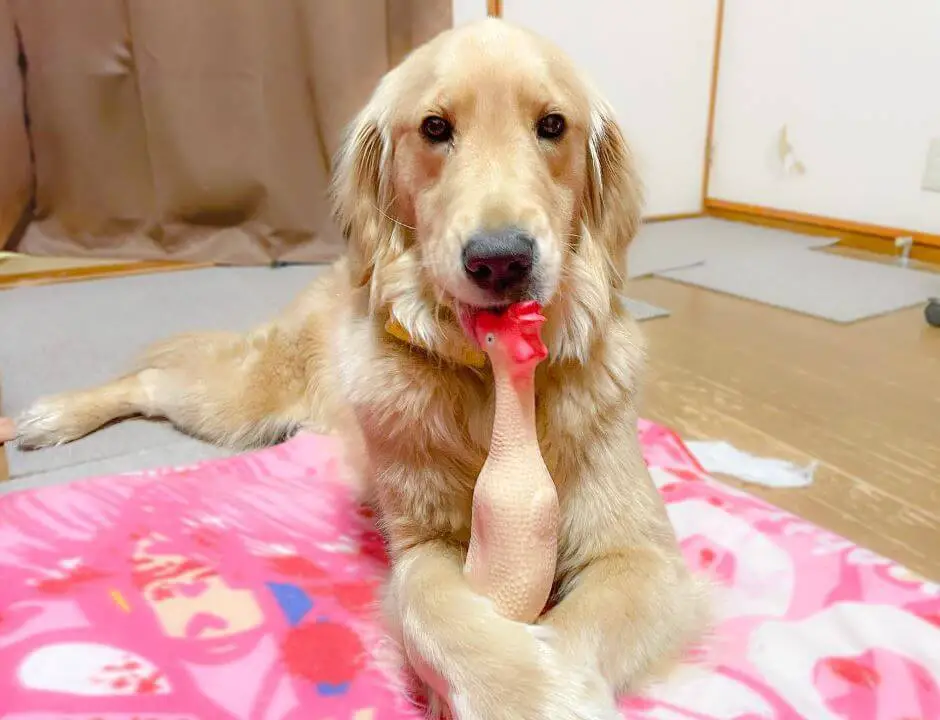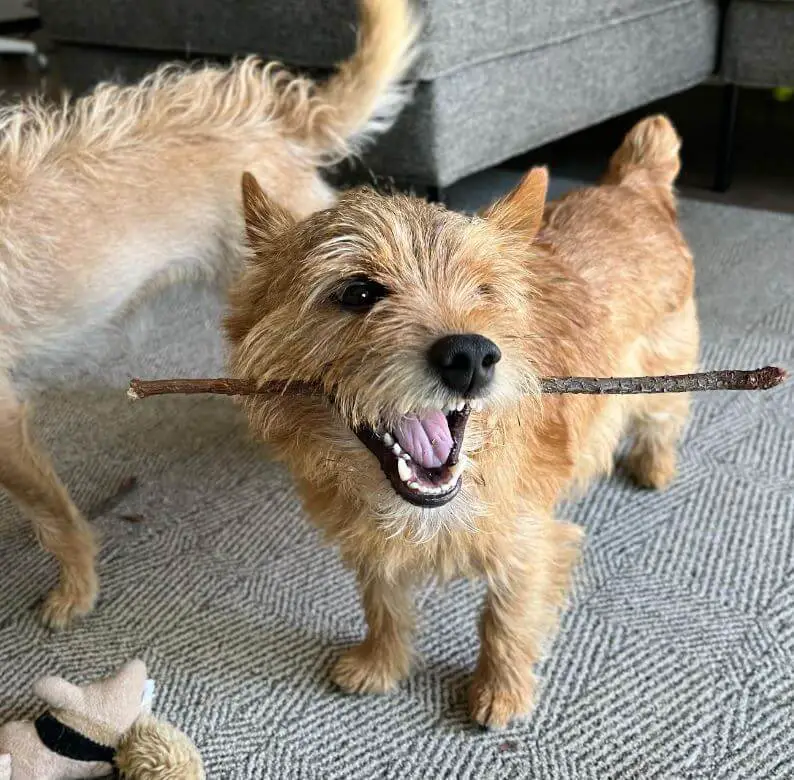If you’ve ever come home to find your furniture or baseboards chewed up by your furry friend, you’re not alone. Chewing on furniture and baseboards is a common behavior among dogs, but it can be frustrating and even costly for pet owners. In this article, we’ll delve into the reasons behind this behavior, helping you understand why your dog is chewing on your belongings and how to address the issue.

#1 – Natural Instincts:
Chewing is a natural behavior for dogs that stems from their ancestry as hunters and scavengers. Puppies, in particular, explore their environment through their mouths, which helps them learn about different textures and tastes. Chewing also serves the purpose of keeping their teeth and jaws strong. In some cases, adult dogs may retain this habit, especially if they didn’t receive proper training as puppies.
#2 – Teething and Discomfort:
Puppies go through a teething phase, much like human babies. During this time, chewing helps alleviate the discomfort caused by new teeth erupting through the gums. Providing appropriate chew toys can redirect their chewing behavior away from your furniture and baseboards. Make sure the toys are designed for teething puppies and are safe for them to gnaw on.
#3 – Boredom and Excess Energy:
Dogs are active animals that need mental and physical stimulation. If they are bored or have excess energy, they may resort to destructive behaviors like chewing. This is particularly true for breeds with high energy levels. Regular exercise, interactive play, and puzzle toys can help keep your dog mentally and physically engaged, reducing the likelihood of destructive chewing.
#4 – Anxiety and Stress:
Chewing can be a coping mechanism for dogs experiencing anxiety or stress. Separation anxiety, changes in routine, or unfamiliar environments can trigger this behavior. Pay attention to any changes in your dog’s behavior or surroundings, and consult a veterinarian or professional dog trainer if you suspect anxiety is the underlying cause.
#5 – Attention-Seeking Behavior:
Some dogs learn that chewing on furniture and baseboards can attract their owner’s attention, even if it’s negative attention. If your dog feels lonely or neglected, they might engage in destructive behavior to get your focus. Ensuring your dog receives regular attention, playtime, and affection can help curb this behavior.
#6 – Lack of Proper Training:
In some cases, dogs may not have been taught appropriate chewing behavior. If a dog hasn’t learned what items are acceptable to chew on, they might choose whatever is accessible, including furniture and baseboards. Early training that encourages positive chewing habits and redirects them to appropriate chew toys is essential.

How to Address the Behavior:
- Provide Appropriate Chew Toys: Offer a variety of safe and durable chew toys that are designed to satisfy your dog’s chewing needs.
- Training and Positive Reinforcement: Teach your dog the “leave it” and “drop it” commands. When they chew on the correct items, reward them with praise, treats, or playtime.
- Exercise and Mental Stimulation: Ensure your dog gets enough physical exercise and mental enrichment through activities like walks, interactive play, and puzzle toys.
- Create a Dog-Friendly Environment: Use bitter-tasting sprays on furniture and baseboards to deter chewing. Make sure your dog has a comfortable and designated space where they can relax.
- Consult a Professional: If the chewing behavior persists or is rooted in anxiety, consult a veterinarian or a professional dog trainer for guidance.

Understanding why your dog chews on furniture and baseboards is the first step toward addressing this behavior effectively. Whether it’s due to natural instincts, teething, boredom, anxiety, or lack of training, there are ways to redirect their chewing habits onto appropriate items. By providing proper chew toys, engaging in training and playtime, and addressing any underlying issues, you can help your dog develop positive chewing behaviors and maintain a harmonious living environment for both you and your furry companion.
